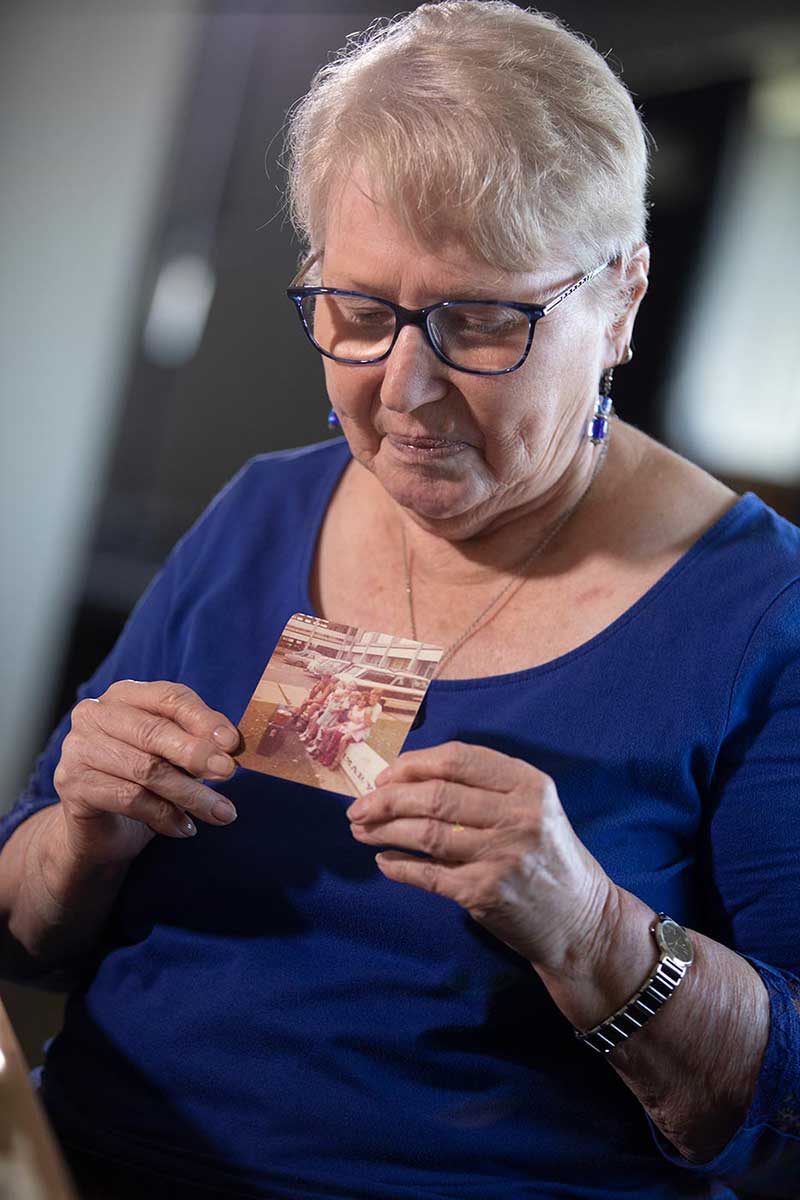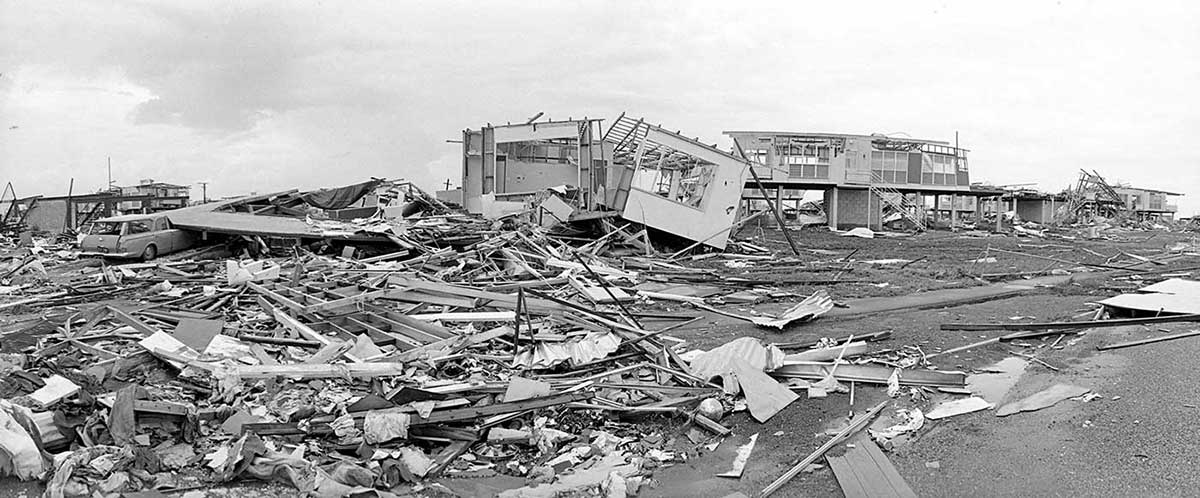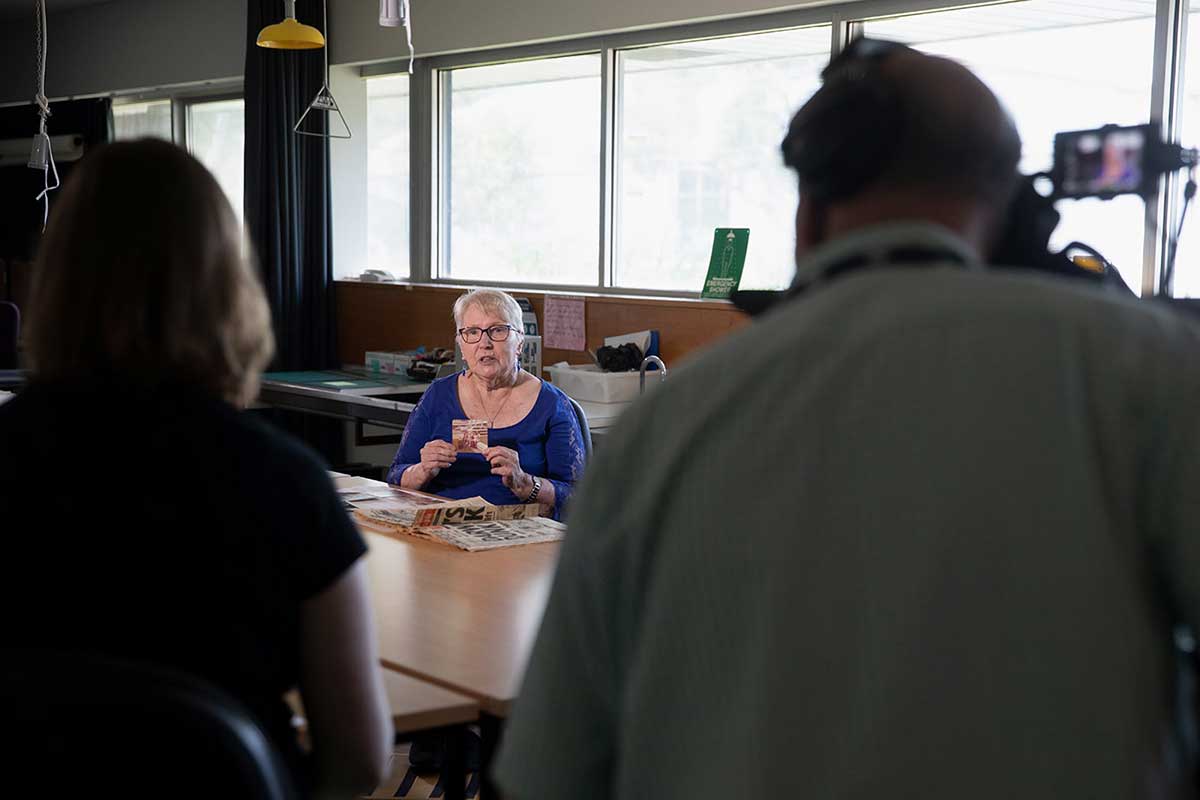As we build our new environmental history gallery, we’ve been working with communities to explore personal stories. As part of this project we interviewed Diane Hunter about her experience of Cyclone Tracy.
The new gallery explores Cyclone Tracy as an example of the powerful forces that have shaped Australia. Despite being one of the smallest tropical cyclones ever recorded, Cyclone Tracy had a devastating impact when it hit land in the early hours of Christmas Day in 1974. Bearing the brunt of the cyclone, Darwin was left utterly devastated.
While people across Australia were unwrapping presents and tucking into Christmas lunch, in Darwin tens of thousands of people were left homeless with just the clothes on their backs. Sixty-six people died and thousands more were injured.
Cyclone Tracy hits

Through his research into Cyclone Tracy, curator Stephen Munro met Diane. She was kind enough to share her story with us, along with objects that relate to her experience.
Diane and her children, Tim and Zoe, arrived in Darwin on Christmas Eve 1974, just hours before Cyclone Tracy hit. They planned to holiday there for a month to visit Diane’s sisters and their families.
After the cyclone hit, Diane and her family spent four days sheltering in an office building, before leaving Darwin on an evacuation flight.
This year the challenges of coordinating live filming have been great. As borders closed and COVID restrictions were put in place, we had to rapidly change plans for location filming.
In some cases, we were able to delay filming, while in others we had to find alternative ways to capture content, including engaging local creatives.
As borders began to lift and restrictions ease, we were able to bring Diane and her daughter Zoe from Brisbane to Canberra where we recorded their stories. Over two days Diane shared her remarkable story of survival – the hours spent sheltering during the cyclone, the sound of the violent winds and the destruction of her sister’s home.
She also shared the meaning behind the few personal items that she was able to salvage in the aftermath. Diane saved a desk organiser, a Christmas gift from her son, money found floating on the floor of her sister's flat and three evacuation registration cards. She has since donated these items to the Museum.
The experience had a profound and lasting impact on Diane. Even today she feels some uneasiness before wild weather events. It was emotional recording these memories, and we are grateful to Diane and Zoe for the stories they have shared with us.
In our collection
You may also like


